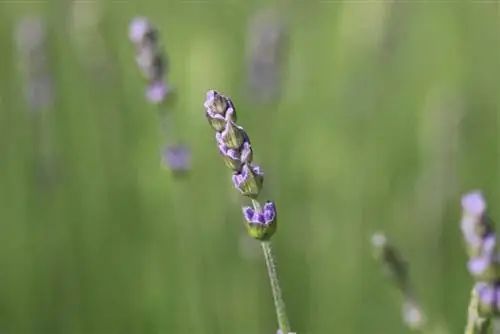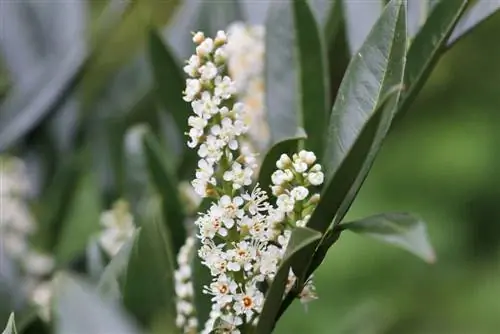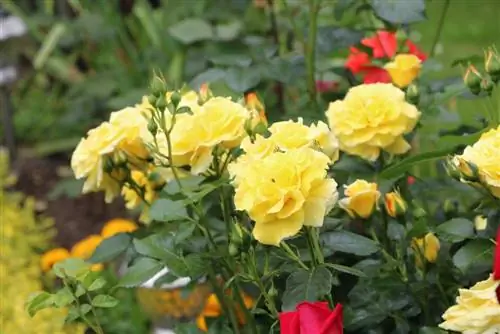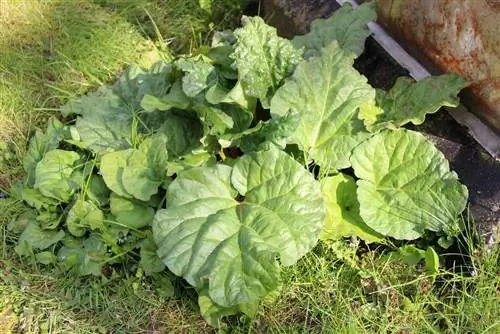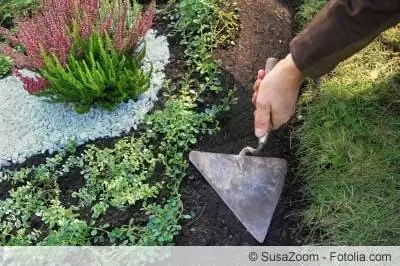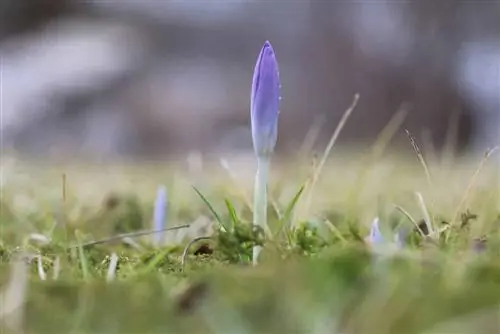- Author admin [email protected].
- Public 2023-12-17 03:39.
- Last modified 2025-01-24 12:45.
There have been numerous stories and legends surrounding lavender for several millennia. Its versatility as a medicinal and useful plant was already known to the ancient Egyptians and Romans. Even today, the plant with its purple flowers has lost none of its fascination and popularity. It takes little effort to cultivate lavandula in your own garden. In addition to the optimal location and the right soil, there are a few relevant details to consider when sowing and planting the mint family.
A Mediterranean Beauty
Real lavender, often also called narrow-leaved lavender, is more than just an attractive ornament for the garden. With its pleasant scent, lavender creates an exotic atmosphere. The plant's essential oils have a positive effect on the body and mind. The flowers of Lavandula are a rich source of food for bees, bumblebees and butterflies well into October. Lavender originally comes from the mountainous areas around the Mediterranean. In these regions it is by no means unusual to find the “Lavandula Angustifolia” variety at an altitude of up to 2000 meters. Warmth, sunlight and a permeable soil are the most important criteria for the successful cultivation of the perennial plant. The following points have proven themselves:
- Lime acidic soil
- Mix extremely nutrient-rich substrate with lean soil
- Lavender prefers lean soil
- The planting location should be warm and dry
The plant from the Mediterranean region can't do much with wet feet. Standing moisture promotes an infestation of ascomycete fungi. These pathogens cause the root rot that many gardeners fear. This disease cannot be treated with fungicides and other remedies. A large proportion of the affected plants die. For this reason, it makes sense to take preventive measures. A location with a southern orientation and a slight slope is optimal. If the geographical location of your garden does not meet this requirement, you can resort to a trick: pile up small mounds of earth and plant the characteristic shrubs there.
Tip:
The labiate cannot cope with high humidity. For this reason, the plants are not suitable for cultivation on bank edges or in damp places.
The ideal planting time
All types of Lavandula are heat and sun loving plants. With the right protection, older specimens can survive the cold season unscathed. In order to avoid any unpleasant surprises in spring, the time of planting plays an important role. Compared to other perennials, lavender needs several months to acclimatize to a new location and to develop its densely branched network of roots. In this way, the perennial bushes are able to draw water and nutrients from deeper layers of the earth, even in very dry conditions. Lavender plants purchased or grown on the windowsill should be planted in the garden in spring. If the location and care meet the requirements of the perennials, you can often enjoy the pleasantly smelling flowers in the summer.
- Planting time in spring is between March and May
- Larger plants can be planted earlier
- Late onset of cold frost can damage the plants
- For protection, you should spread brushwood or bark mulch
- Alternatively, wrap the above-ground shoots with a special fleece
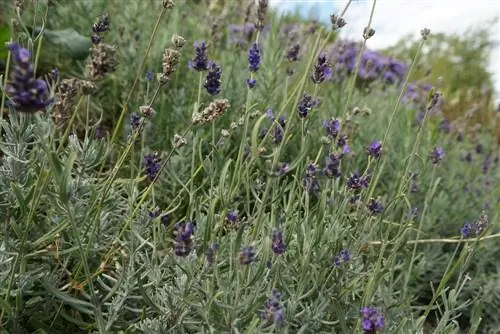
Mediterranean plants from garden centers or the supermarket should be prepared accordingly before putting them in the garden. Dip the root ball and the old substrate into a bucket of lukewarm water. As soon as no more air bubbles are visible, the soil has become sufficiently saturated. With this measure you will make it easier for the plants to get used to the new place. Prepare the site the previous year. In the winter months the soil can settle sufficiently.
Planting in autumn
Between the end of August and the beginning of October, lavender lovers have another opportunity to plant the Mediterranean plants in the garden. It is advisable to plant only older and large mint plants in autumn. In just a few weeks, these plants manage to adequately prepare for the cold season. Similar to spring, it can also make sense to protect plants from cold and frost in autumn. It is sufficient if you cover the lavender with a thick layer of brushwood, wilted leaves or bark mulch. In addition to planting in ornamental beds, the colorful season is also suitable for taking cuttings and cuttings. Using this method, the Mediterranean beauties can be easily propagated.
Distance and cut
Depending on the variety, lavender can reach a height of up to 2 m. In order to provide the plants with enough space, a minimum distance of approximately 40 cm should be maintained. This space is necessary so that the perennials do not compete with each other for light and nutrients. The result of cultivation that is too dense: the plants become bare in the lower third. It makes sense to cut back the plants immediately after planting in spring. In this way, Lavandula is stimulated to grow bushy.
- Cut 1 year old lavender back to half
- Short perennial plants up to 2/3
- The 2nd cut is done after flowering
- Dried flowers can be used in scented sachets
Tip:
You can cultivate the Mediterranean ornamental plants permanently in a sufficiently large planter. The best time for planting and repotting potted plants is in spring.
Preparing ornamental beds
The tropical plants feel particularly at home in rock gardens and in Mediterranean garden landscapes. There is very little to consider when planting:
- Remove weeds and root residue from the planting site
- Enrich heavy soils with sand
- Create a drainage if necessary
- Expanded clay and small pebbles are suitable for this task
- Insert lavender up to the upper root neck
- Fill cavities with substrate
- Press the soil firmly and water vigorously
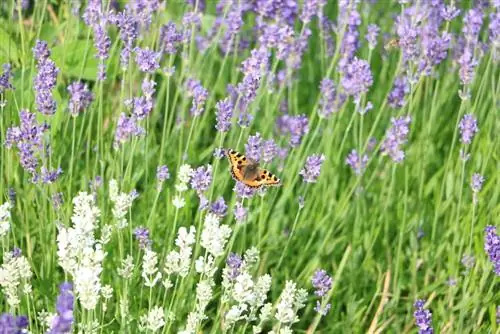
Lavandula feels extremely comfortable in the company of roses. With their ethereal ingredients, the plants not only attract beneficial insects, but also keep aphids at bay. The plants from the Mediterranean region can be combined with almost all perennials in the garden that share the same requirements in terms of location and substrate.
Conclusion
Lavender is a versatile cultivated plant that stands out for its characteristic smell. There is little to consider when cultivating. Only the location, soil and the correct planting time should be taken into account. The plant also exudes its Mediterranean flair in the pot.

